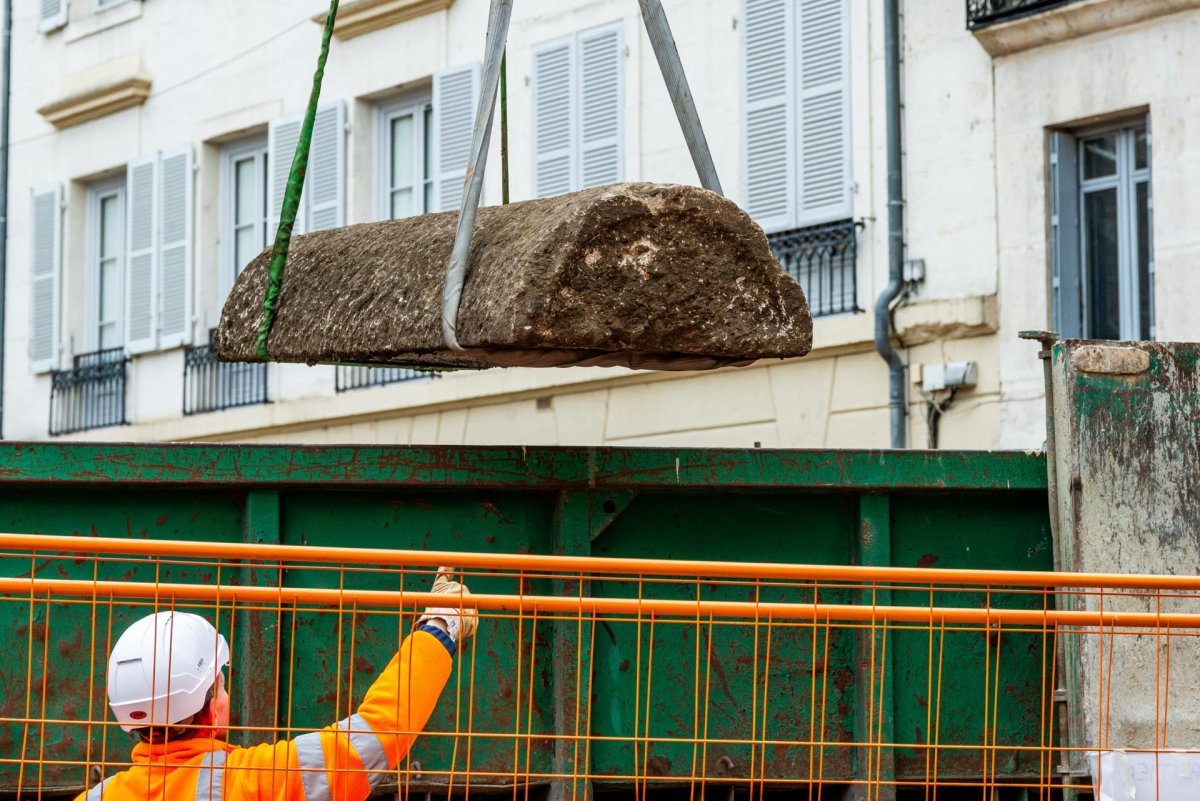Archaeologists have unearthed several sandstone sarcophagi from the early medieval period below the streets of a French city.
The sarcophagi were uncovered during excavations conducted in the downtown of Dijon, the historical capital of the Burgundy region in eastern France, the National Institute of Preventive Archaeological Research (INRAP) announced in a press release.
The excavations have been taking place at the foot of the Church of Saint-Jean, revealing burials from a necropolis that dates back to early medieval times.
The sandstone sarcophagi that researchers excavated in this area are trapezoidal in shape and are characteristic of the Merovingian period (6th-8th century), indicating that they are more than 1,200 years old. Some have suffered damage due to overlapping burials.

Archaeologists also unearthed a limestone sarcophagus with a cuboid shape and a heavy, curved lid. This stone coffin appears to be older, perhaps dating to the 5th century. Three skeletons were found inside, probably indicating that it was used for multiple burials over different periods.
Researchers are planning to carry out additional analyses in an attempt to date these skeletons, according to INRAP.
The Church of Saint-Jean in Dijon has a long history. In the 6th century, the Merovingian author Gregory of Tours mentioned a religious building at the site, describing it as a funerary basilica, which is no longer standing.
The current building was constructed at the site during the 15th century in the Gothic style and the structure underwent various modifications in the subsequent centuries. During the French Revolution (1789-1799), the building became national property and subsequently served multiple secular uses. Finally, it became the Parvis Saint-Jean Theater in 1974, which is still operating today.
In the early Middle Ages, Dijon was a fortified town with a necropolis outside the city walls, next to the site of the church.
Aside from the sarcophagi, excavations have brought to light several other burials from this necropolis, including many tombs made of stone slabs. In particular, archeologists have identified a large number of child burials that are characteristic of the period between the 11th and 13th.
After the 15th century, the necropolis was reduced to just one area south of the Church of Saint-Jean, which contains burials that may date from as late as the 18th century.
Do you have a tip on a science story that Newsweek should be covering? Do you have a question about archaeology? Let us know via science@newsweek.com.
Uncommon Knowledge
Newsweek is committed to challenging conventional wisdom and finding connections in the search for common ground.
Newsweek is committed to challenging conventional wisdom and finding connections in the search for common ground.
About the writer
Aristos is a Newsweek science reporter with the London, U.K., bureau. He reports on science and health topics, including; animal, ... Read more
To read how Newsweek uses AI as a newsroom tool, Click here.






